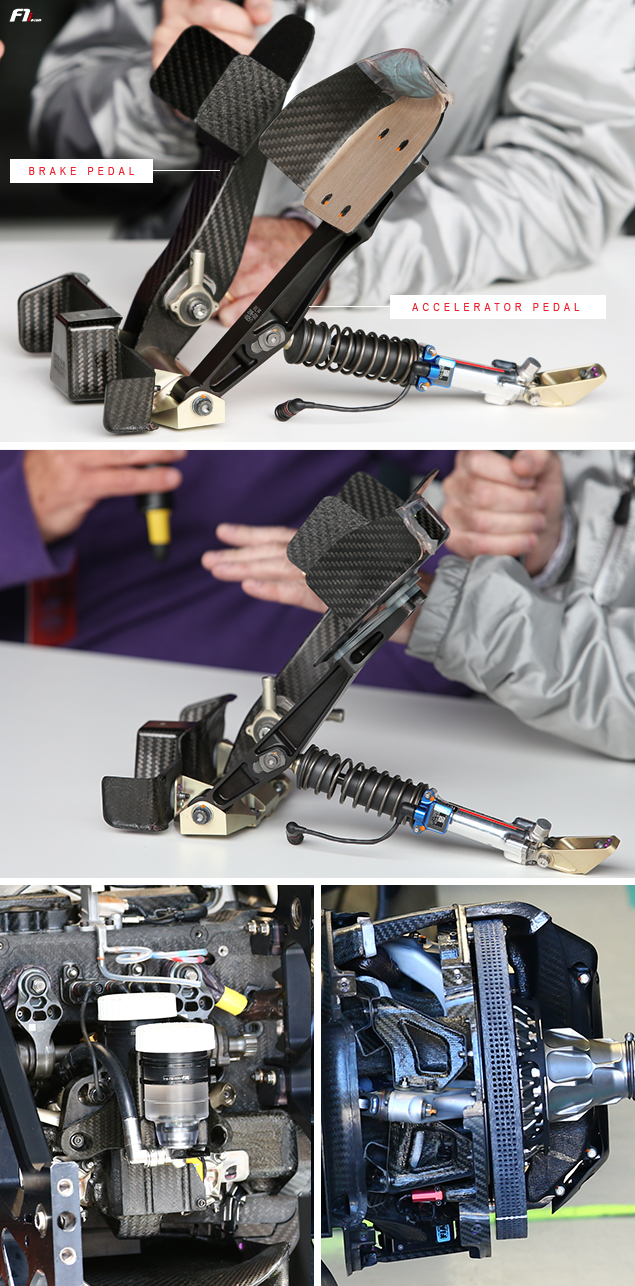F1i technical expert Nicolas Carpentiers provides you with images and explanations of the technical concepts and novelties spotted at the Canadian Grand Prix.

PEDAL TO THE METAL
The official Formula 1 website reports that a driver spends 72% of the time on the throttle around a lap of Circuit Gilles Villeneuve and 19% on the brake pedal, applying a total load of 930kg across the seven braking points. Both under duress in Canada, the accelerator and brake systems are activated by a pair of pedals that one barely gets a glimpse of.
On the image above, one can see the two pedals of a Mercedes car (the chassis’ year is not specified). In the background and slightly on the left is the brake pedal, entirely made out of carbon while the throttle is made out of carbon and metal (aluminium or titanium).
Each pedal weighs around 300g and features raised edges. It is also covered with a non-slip material to avoid the driver’s foot sliding because of centrifugal forces. Pedals are usually tailor-made to the driver’s liking. The stroke of a brake pedal is very short, from five to 10 millimetres: the pilot first slams the pedal then gradually releases it, this is because the grip of the car decreases along with the drop in downforce when the vehicle is slowing down.
On each side and at the bottom of the brake pedal, a pair of metallic parts activate the two master cylinders located at the front end of the car, which control front and rear braking. Brake balance between rear and front can be adjusted with a toggle on the steering wheel, depending on the corner, tyre wear, and fuel load.
F1 cars are using fly-by-wire for throttle input: a sensor converts the pedal load into signals sent to the electronic control unit (ECU), which in turn controls the power unit.






